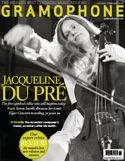Texte paru dans: / Appeared in: |
|
|
Outil de traduction (Très approximatif) |
|
|
Reviewer:
Harriet
Smith ‘At
every turn, Piotr Anderszewski harnesses the possibilities of the piano in
the service of Bach; the result is a clear labour of love’ At every turn you get the sense of Bach flexing his compositional muscles in these early keyboard suites. There is of course nothing innately ‘English’ about them and the origin of their title is shrouded in mystery, though Bach’s earliest biographer Johann Nikolaus Forkel speculated that it reflected the nationality of the suites’ (unknown) dedicatee. As with the keyboard partitas (of which Anderszewski so memorably recorded the First, Third and Sixth for Virgin Classics back in 2001 – 1/03), there’s a sense of Bach demonstrating just how much variety he could introduce into a suite built around the common elements of Prelude, Allemande, Courante, Sarabande and Gigue. In Anderszewski’s hands the First, Third and Fifth very much occupy their own worlds in terms of mood. Thus there’s a palpable delight in the rhythmically ungainly theme from which the Gigue of the First Suite is fashioned and Anderszewski’s way with Bach’s counterpoint is at once strong-jawed and supple. We’re always aware of the re-entry of a fugue subject, for instance, as it peeks through the texture in different registers or reappears stood on its head, yet it’s never exaggerated as is sometimes the tendency with less imaginative pianists.
And how Anderszewski can dance – at least at the keyboard – in a movement such as the Prelude of the Third Suite, urged into life through subtle dynamics, voicings, articulation and judicious ornamentation. A very different kind of dance reveals itself in the Gavotte II of the Third Suite, a musette in which he takes a more impish view than many, the sonorous drone effect contrasting delightfully with the tripping upper lines. The way he has considered the touch and dynamic of every phrase means that these are readings that constantly impress with fresh details each time you hear them.
Even the most apparently
unassuming numbers, such as the Second Bourrée of the First Suite or the
Passepied II of the Fifth, gain a sense of intrigue as he re-examines them from
every angle, again bringing multifarious shadings to the music. And it all flows
effortlessly – though I’m sure the journey has been anything but that.
Highlights abound: in the murmuring Courante of the Third Suite, the Pole’s
reactivity leaves Maria João Pires sounding a touch unsubtle – which is really
saying something. This is followed by one of the most extraordinary readings of
the Sarabande I’ve ever heard. While Pires revels in its echoing harmonies,
Anderszewski draws you daringly into his own world, as Bach’s initially
grandiose sonorities become more and more withdrawn. This whispered intimacy
extends into his insertion of an ornamented version of this movement, entitled
‘Les agréments de la même Sarabande’, which proves a masterclass in audacious
ornamentation, yet never overburdening Bach’s melodic lines. In fact the effect
here is truly meditative. Fittingly, there is a long silence before the limpid
Gavotte.
You can be in no doubt of the thought that has gone into this enterprise, from Anderszewski’s ordering of the courantes of the First Suite, which he explains in the booklet, to the programming of the suites themselves, opening the disc with the Third rather than the more quizzical First. And at every turn, he harnesses the possibilities of the piano in the service of Bach; the result is a clear labour of love, and one in which he shines new light on old music to mesmerising effect, all of which is captured by a warmly sympathetic recording and an engaging booklet-note by Mark Audus.
Anderszewski’s CDs are all too infrequent, so let’s cherish this one. |
|
|
|
|
|
Cliquez l'un ou l'autre
bouton pour découvrir bien d'autres critiques de CD |
|




